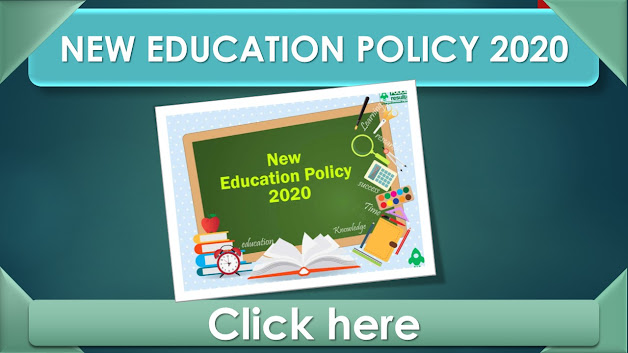10. Institutional Restructuring and Consolidation
10.1. The main thrust of this policy regarding higher education is to end the fragmentation of higher education by transforming higher education institutions into large multidisciplinary universities, colleges, and HEI clusters/Knowledge Hubs, each of which will aim to have 3,000 or more students. This would help build vibrant communities of scholars and peers, break down harmful silos, enable students to become well-rounded across disciplines including artistic, creative, and analytic subjects as well as sports, develop active research communities across disciplines including cross-disciplinary research, and increase resource efficiency, both material and human, across higher education.
10.2. Moving to large multidisciplinary universities and HEI clusters is thus the highest
recommendation of this policy regarding the structure of higher education. The ancient Indian universities Takshashila, Nalanda, Vallabhi, and Vikramshila, which had thousands of students from India and the world studying in vibrant multidisciplinary environments, amply demonstrated the type of great success that large multidisciplinary research and teaching universities could bring. India urgently needs to bring back this great Indian tradition to create well-rounded and innovative individuals, and which is already transforming other countries educationally and economically.
10.3. This vision of higher education will require, in particular, a new conceptual perception/understanding for what constitutes a higher education institution (HEI), i.e., a university or a college. A university will mean a multidisciplinary institution of higher learning that offers undergraduate and graduate programmes, with high quality teaching, research, and community engagement. The definition of university will thus allow a spectrum of institutions that range from those that place equal emphasis on teaching and research i.e., Research-intensive Universities, those that place greater emphasis on teaching but still conduct significant research i.e. Teaching-intensive Universities. Meanwhile, an Autonomous degree-granting College (AC) will refer to a large multidisciplinary institution of higher learning that grants undergraduate degrees and is primarily focused on undergraduate teaching though it would not be restricted to that and it need not be restricted to that and it would generally be smaller than a typical university.
10.4. A stage-wise mechanism for granting graded autonomy to colleges, through a transparent system of graded accreditation, will be established. Colleges will be encouraged, mentored, supported, and incentivized to gradually attain the minimum benchmarks required for each level of accreditation. Over a period of time, it is envisaged that every college would develop into either an Autonomous degree-granting College, or a constituent college of a university - in the latter case, it would be fully a part of the university. With appropriate accreditations, Autonomous degree-granting Colleges could evolve into Research-intensive or Teaching-intensive Universities, if they so aspire.
10.5. It must be clearly stated that these three broad types of institutions are not in any natural way a rigid, exclusionary categorization, but are along a continuum. HEIs will have the autonomy and freedom to move gradually from one category to another, based on their plans, actions, and effectiveness. The most salient marker for these categories of institutions will be the focus of their goals and work. The Accreditation System will develop and use appropriately different and relevant norms across this range of HEIs. However, the expectations of high quality of education, and of teaching-learning, across all HEIs will be the same.
10.6. In addition to teaching and research, HEIs will have other crucial responsibilities, which they will discharge through appropriate resourcing, incentives, and structures. These include supporting other HEIs in their development, community engagement and service, contribution to various fields of practice, faculty development for the higher education system, and support to school education.
10.7. By 2040, all higher education institutions (HEIs) shall aim to become multidisciplinary institutions and shall aim to have larger student enrolments preferably in the thousands, for optimal use of infrastructure and resources, and for the creation of vibrant multidisciplinary communities. Since this process will take time, all HEIs will firstly plan to become multidisciplinary by 2030, and then gradually increase student strength to the desired levels.
10.8. More HEIs shall be established and developed in underserved regions to ensure full access, equity, and inclusion. There shall, by 2030, be at least one large multidisciplinary HEI in or near every district. Steps shall be taken towards developing high-quality higher education institutions both public and private that have medium of instruction in local/Indian languages or bilingually. The aim will be to increase the Gross Enrolment Ratio in higher education including vocational education from 26.3% (2018) to 50% by 2035. While a number of new institutions may be developed to attain these goals, a large part of the capacity creation will be achieved by consolidating, substantially expanding, and also improving existing HEIs.
10.9. Growth will be in both public and private institutions, with a strong emphasis on developing a large number of outstanding public institutions. There will be a fair and transparent system for determining increased levels of public funding support for public HEIs. This system will give an equitable opportunity for all public institutions to grow and develop, and will be based on transparent, pre-announced criteria from within the accreditation norms of the Accreditation System. HEIs delivering education of the highest quality as laid down in this Policy will be incentivized in expanding their capacity.
10.10. Institutions will have the option to run Open Distance Learning (ODL) and online programmes, provided they are accredited to do so, in order to enhance their offerings, improve access, increase GER, and provide opportunities for lifelong learning (SDG 4). All ODL programmes and their components leading to any diploma or degree will be of standards and quality equivalent to the highest quality programmes run by the HEIs on their campuses. Top institutions accredited for ODL will be encouraged and supported to develop high-quality online courses. Such quality online courses will be suitably integrated into curricula of HEIs, and blended mode will be preferred.
10.11. Single-stream HEIs will be phased out over time, and all will move towards becoming vibrant multidisciplinary institutions or parts of vibrant multidisciplinary HEI clusters, in order to enable and encourage high-quality multidisciplinary and cross-disciplinary teaching and research across fields. Single-stream HEIs will, in particular, add departments across different fields that would strengthen the single stream that they currently serve. Through the attainment of suitable accreditations, all HEIs will gradually move towards full autonomy - academic and administrative - in order to enable this vibrant culture. The autonomy of public institutions will be backed by adequate public financial support and stability. Private institutions with a public-spirited commitment to high-quality equitable education will be encouraged.
10.12. The new regulatory system envisioned by this Policy will foster this overall culture of empowerment and autonomy to innovate, including by gradually phasing out the system of ‘affiliated colleges’ over a period of fifteen years through a system of graded autonomy, and to be carried out in a challenge mode. Each existing affiliating university will be responsible for mentoring its affiliated colleges so that they can develop their capabilities and achieve minimum benchmarks in academic and curricular matters; teaching and assessment; governance reforms; financial robustness; and administrative efficiency. All colleges currently affiliated to a university shall attain the required benchmarks over time to secure the prescribed accreditation benchmarks and eventually become autonomous degree-granting colleges. This will be achieved through a concerted national effort including suitable mentoring and governmental support for the same.
10.13. The overall higher education sector will aim to be an integrated higher education system, including professional and vocational education. This Policy and its approach will be equally applicable to all HEIs across all current streams, which would eventually merge into one coherent ecosystem of higher education.
10.14. University, worldwide, means a multidisciplinary institution of higher learning that offers undergraduate, graduate, and Ph.D programmes, and engages in high-quality teaching and research. The present complex nomenclature of HEIs in the country such as ‘deemed to be university’, ‘affiliating university’, ‘affiliating technical university', ‘unitary university’ shall be replaced simply by 'university' on fulfilling the criteria as per norms.
English Link
- NatNational Education Policy 2020ional
- NEP 2020 ,Part I. SCHOOL EDUCATION
- NEP 2020 ,Part I. Curriculum and Pedagogy in Schools: Learning Should be Holistic, Integrated, Enjoyable, and Engaging
- NEP 2020 ,Part I. Teachers
- NEP 2020 ,Part I, Equitable and Inclusive Education: Learning for All
- NEP 2020 ,Part I, Efficient Resourcing and Effective Governance through School Complexes/Clusters
- NEP 2020 ,Part I, Standard-setting and Accreditation for School Education
- NEP 2020 , Part II, HIGHER EDUCATION
- NEP 2020 , Part II, HIGHER EDUCATION, Institutional Restructuring and Consolidation
- NEP 2020 , Part II, HIGHER EDUCATION, Towards a More Holistic and Multidisciplinary Education
- NEP 2020 , Part II, HIGHER EDUCATION, Optimal Learning Environments and Support for Students
- NEP 2020 , Part II, HIGHER EDUCATION, Motivated, Energized, and Capable Faculty
- NEP 2020 , Part II, HIGHER EDUCATION, Equity and Inclusion in Higher Education
- NEP 2020 , Part II, HIGHER EDUCATION, Teacher Education
- NEP 2020 , Part II, HIGHER EDUCATION, Reimagining Vocational Education
- NEP 2020 , Part II, HIGHER EDUCATION, Catalysing Quality Academic Research in All Fields through a new National Research Foundation
- NEP 2020 , Part II, HIGHER EDUCATION, Transforming the Regulatory System of Higher Education
- NEP 2020 , Part II, HIGHER EDUCATION, Effective Governance and Leadership for Higher Education Institutions
- NEP 2020, Part III, OTHER KEY AREAS OF FOCUS
- NEP 2020, Part III, Adult Education and Lifelong Learning
- NEP 2020, Part III, Promotion of Indian Languages, Arts, and Culture
- NEP 2020, Part III, Technology Use and Integration
- NEP 2020, Part III, Online and Digital Education: Ensuring Equitable Use of Technology
- NEP 2020, Part IV, MAKING IT HAPPEN
हिंदी लिंक
- NatNational Education Policy 2020ional (राष्ट्रीय शिक्षा नीति 2020)
- एनईपी 2020, भाग I। स्कूल शिक्षा
- एनईपी 2020, भाग I। स्कूलों में पाठ्यचर्या और शिक्षाशास्त्र: सीखना समग्र, एकीकृत, आनंददायक और आकर्षक होना चाहिए
- एनईपी 2020, भाग I। शिक्षक
- एनईपी 2020, भाग I, समान और समावेशी शिक्षा: सभी के लिए सीखना
- एनईपी 2020, भाग I, स्कूल परिसरों / समूहों के माध्यम से कुशल संसाधन और प्रभावी शासन
- एनईपी 2020, भाग I, स्कूली शिक्षा के लिए मानक-सेटिंग और प्रत्यायन
- एनईपी 2020, भाग II, उच्च शिक्षा
- एनईपी 2020, भाग II, उच्च शिक्षा, संस्थागत पुनर्गठन और समेकन
- NEP 2020, भाग II, उच्च शिक्षा, एक अधिक समग्र और बहुविषयक शिक्षा की ओर
- एनईपी 2020, भाग II, उच्च शिक्षा, इष्टतम शिक्षण वातावरण और छात्रों के लिए समर्थन
- एनईपी 2020, भाग II, उच्च शिक्षा, प्रेरित, ऊर्जावान और सक्षम संकाय
- NEP 2020, भाग II, उच्च शिक्षा, समानता और उच्च शिक्षा में समावेश
- एनईपी 2020, भाग II, उच्च शिक्षा, शिक्षक शिक्षा
- एनईपी 2020, भाग II, उच्च शिक्षा, व्यावसायिक शिक्षा की पुनर्कल्पना
- एनईपी 2020, भाग II, उच्च शिक्षा, एक नए राष्ट्रीय अनुसंधान फाउंडेशन के माध्यम से सभी क्षेत्रों में गुणवत्तापूर्ण शैक्षणिक अनुसंधान को उत्प्रेरित करना
- NEP 2020, भाग II, उच्च शिक्षा, उच्च शिक्षा की नियामक प्रणाली को बदलना
- NEP 2020, भाग II, उच्च शिक्षा, उच्च शिक्षा संस्थानों के लिए प्रभावी शासन और नेतृत्व
- एनईपी 2020, भाग III, फोकस के अन्य प्रमुख क्षेत्र
- एनईपी 2020, भाग III, प्रौढ़ शिक्षा और आजीवन शिक्षा
- एनईपी 2020, भाग III, भारतीय भाषाओं, कला और संस्कृति को बढ़ावा देना
- एनईपी 2020, भाग III, प्रौद्योगिकी उपयोग और एकीकरण
- एनईपी 2020, भाग III, ऑनलाइन और डिजिटल शिक्षा: प्रौद्योगिकी का समान उपयोग सुनिश्चित करना
- एनईपी 2020, भाग IV, इसे संभव बनाना











Follow Us